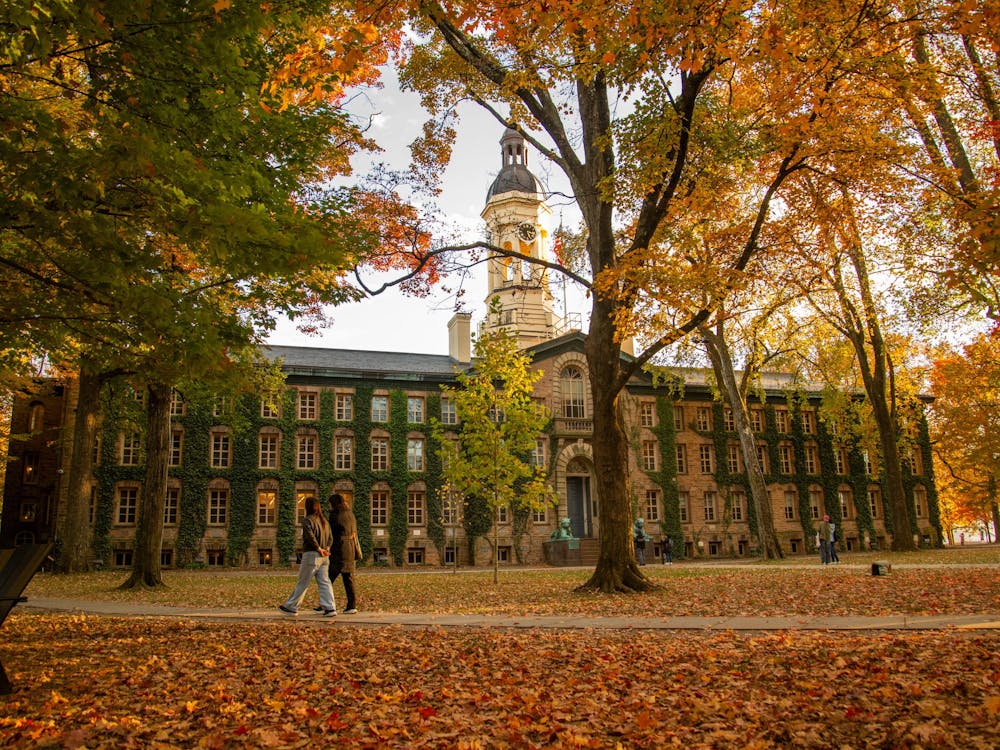So we were talking the other day about Princeton architecture — or at least I was. Some of you won't be surprised. Students who have taken courses with me know that I raise this subject when they're least expecting it. Worse, they know that I really don't like many of the buildings on our beautiful campus.
To many, my crankiness seems strange. The beauty of Princeton's Gothic sprawl, after all, is celebrated in song and story. From "This Side of Paradise" to "The Rule of Four," writers have struggled to convey Princeton's dour, craggy splendor. All you have to do to appreciate how lovely a place it can be is to walk the campus late on a fall afternoon, as the warm sun slants through the colored leaves.
Well, I never denied that the trees were pretty. In fact, I have my favorites, and watch them take on leaf in the spring and turn into glorious color in the fall, year after year, with great pleasure. I just can't say enough about the trees.
It's the rest of the campus that bugs me. There's no point going into the older buildings — though all it takes to see their flaws is a trip to Oxford or Cambridge. They're here to stay. So are the nastier works of faux-Gothic that the University put up when it had lost confidence in the original style. The guys who built Chancellor Green were Victorian wild men. I have always suspected that they were smoking what are now illegal substances when they drew the plans and elevations of that nightmare space. But at least they believed in what they were doing, and they produced a great Victorian horror, Jeremy Bentham's Panopticon on crack and in your face. Every campus should have at least one of these.
Not so the later, lesser architects who pasted feeble Gothic ornament, possibly bought at so much a yard, on the big factory-style box that is Firestone Library. And I won't pause over the genius who designed my own dear Dickinson Hall — the one who, faced with the question of how to line the walls, exclaimed, "Let's have the yellow tiles! That way it'll look like a middle school!"
Instead, let's look at some of the buildings we have perpetrated in recent years. We could, for example, talk about the Friend Center. The architect who reared this hymn to the new electronic age evidently missed a class; that would explain why he built a library, where people try to study, and then ran stairs through the middle of it, up and down which students and faculty bustle on their way to and from class, making lots of noise.
Or we could look at Frist Campus Center. It's wonderful that we finally have a center at all, and I'm always delighted to see the heavy use it receives. But really, look at it. Robert Venturi has built some great buildings. But he also seems to have missed a class at architecture school — the one on facades and how they can be appreciated from a distance. Otherwise he wouldn't have put the Princeton Monorail Project right where it blocks the view of the old Palmer facade — and graphically reveals the crudeness of modern craftsmanship.
But the interior of Frist is the real aesthetic catastrophe. Building a nice building for students to hang out in is not hard. A number of rooms of different sizes, some of them small enough to be cozy: deep, soft furniture and rugs; a fireplace or two and coffee — that's all a campus center needs. Even my alma mater, the impoverished University of Chicago, has a building that meets these criteria. Penn has a lovely one, just refurbished.
Frist, by contrast, offers concrete floors, garden furniture and lighting designed to make anyone who comes in look like a diseased lover in a German Expressionist painting. The glass-walled main dining room is so hideously overlit that you feel as if you've stumbled into one of Edward Hopper's diners, where it's always 3 o'clock in the morning and the coffee is always burnt.
Many architects know how to make a building that looks good, works well and feels comfortable. Robert Stern designed our Center for Jewish Life — an attractive house full of comfortable, varied spaces, which seem to be in constant use. William Rawn, who figures prominently in Tracy Kidder's wonderful book "House," recently built a lovely new dorm at Swarthmore. Is there no hope that someone who shares their belief in handsome, comfortable, functional buildings might find employment on our lovely campus? We've made it a fantastic place to be a tree or a squirrel. Can't we try to do better for the humans? Anthony Grafton is the Henry Putnam University Professor of History. He can be reached at grafton@princeton.edu.








